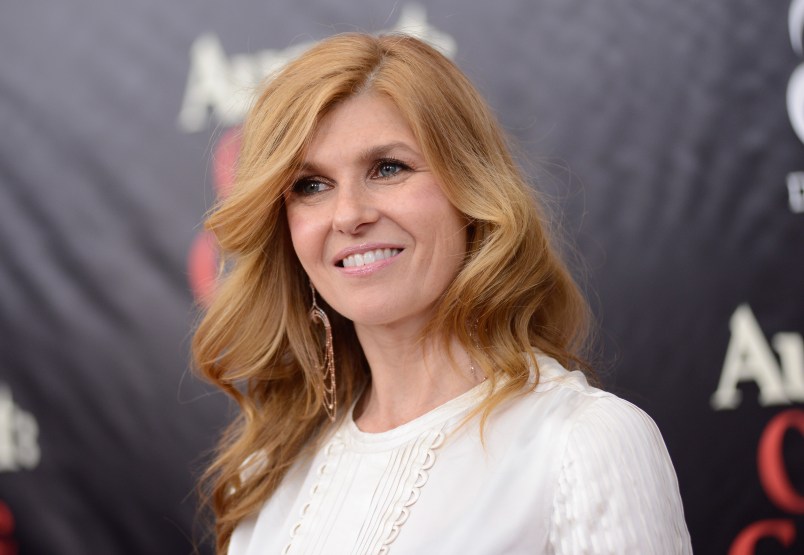Abortion is an incredibly common experience. In the United States, one in three women will have an abortion by the time she turns 45. Despite how common this procedure is and its 41-year history of national legality, abortion remains mired in stigma, a secret often relegated to shameful shadows.
Because there are so few safe public spaces in which one can speak about abortion, the messages we are fed and stories we see in fictional media carry significant weight. That’s what helped drive a new study from the think tank Advancing New Standards in Reproductive Health (ANSIRH). Researchers Gretchen Sisson and Katrina Kimport conducted an elaborate search to identify abortion-related plots in American film and television since 1916. During that time period, they found 310 plotlines related to abortion, with nearly 56 percent of the plotlines ultimately resulting in abortion. They also found that the number of abortion-related plotlines trended upward over time.
Even in the last few years, we have seen abortion depicted on primetime network television in revealing ways.
In the NBC/DirecTV drama Friday Night Lights, viewers saw Becky Sproles wrestle with what choice to make when she became pregnant from a one-night stand with high school football player Luke Cafferty, herself the daughter of a young mother. An emotional and compassionate consultation with guidance counselor Tami Taylor (Connie Britton), sparked a political scandal. Luke’s mother, herself deeply opposed abortion, found out about the consultation and became convinced that Taylor pushed Becky into it.
Last season on the NBC drama Parenthood, Drew Holt and his girlfriend Amy Ellis faced an unplanned pregnancy, and Amy ultimately chose to have an abortion. Amy seemed cool and distant, resolute in her decision, unwilling or perhaps unable to share her inner thoughts and feelings. She reiterated that having a child wasn’t what she wanted, and that abortion was the best choice for her. Though Drew privately confided to his family that he wanted Amy to give birth, outwardly, he remained steadfastly supportive of Amy’s decision.
Both Friday Night Lights and Parenthood featured poignant stories about abortion, but it’s also worth noting that both depicted teenage girls choosing to have an abortion, when in reality, only 18 percent of abortions in the U.S. are obtained by teenagers. In both stories, Amy and Becky are lucky to have support systems but also partners who remain wary about their choices. Ultimately, both Luke and Drew supported the choices that their partners made, and both shows revealed that sometimes, abortion is the simply best option out of a series of not-so-great options.
While these two examples give hope for more realistic and sympathetic portrayals of abortion in American TV and film, this study contained a particularly troubling finding: abortion-related plots are overly associated with death in American TV and film. Nearly 14 percent of stories Sisson and Kimport analyzed saw a woman who considered an abortion ultimately die. This in contrast to the fact that the risk of death for an abortion at or before eight weeks is literally one in a million.
“The risk in these films is a complete exaggeration,” says Sisson.
Some depictions, like Kate Winslet’s character April Wheeler in Revolutionary Road, almost seem progressive and pro-choice in their depiction; April ultimately dies from a self-induced abortion before abortion was legalized in 1973. As Sisson noted, it’s impossible to know the intentions of the screenwriters and producers in these depictions, and yes, television and film are, by definition, dramatized versions of reality.
Even so, the link between abortion and death as depicted in our fictional media has real influence. “Because we don’t have a lot of spaces to talk about abortion, when someone sees something overdramatized about abortion on TV, they just don’t know how that compares to real life.” says Sisson. As abortion has been siphoned off from our popular understanding of healthcare, public knowledge about abortion safety becomes subject to the dramatized representations we see rather than actual, genuine knowledge.
Sisson also told TPM of their preliminary observation that often, fictional depictions of abortion relay a misleading message about parenthood. “Early observations suggest that the women who get abortions in TV and movies aren’t mothers and aren’t interested in becoming mothers. Abortion seems to be a way of avoiding motherhood entirely,” Sisson highlighted. If ultimately corroborated, that stands in direct contrast to the reality of abortion in America. According to the Guttmacher Institute, 61 percent of American women who have abortions already have one or more children, and many note the children they already have as a reason for choosing abortion.
In a society that knows so little about abortion and individual people’s abortion experiences, the depictions of abortion we see, even fictional, become our sole means of conceptualizing and understanding abortion. “Until there are more spaces for women and other people affected by abortion to share their own abortion stories publicly and to have safe spaces around that, what the fictional characters are going through becomes really important and shapes what people think they know about abortion,” Sisson notes.
Abortion in the U.S. is legal, safe, and common, yet safe public spaces to talk openly about the safety and reality of abortion remain elusive. Until we change that, TV and films will have to do.
Lauren Rankin is a freelance writer. Her work has appeared at publications such as Salon, RH Reality Check and TruthOut. She is a board member of the New Jersey Abortion Access Fund and is currently a graduate student in Women’s and Gender Studies at Rutgers University. Follow her on twitter at @laurenarankin.






